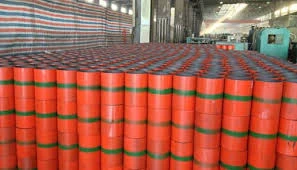- Afrikaans
- Albanian
- Amharic
- Arabic
- Armenian
- Azerbaijani
- Basque
- Belarusian
- Bengali
- Bosnian
- Bulgarian
- Catalan
- Cebuano
- Corsican
- Croatian
- Czech
- Danish
- Dutch
- English
- Esperanto
- Estonian
- Finnish
- French
- Frisian
- Galician
- Georgian
- German
- Greek
- Gujarati
- Haitian Creole
- hausa
- hawaiian
- Hebrew
- Hindi
- Miao
- Hungarian
- Icelandic
- igbo
- Indonesian
- irish
- Italian
- Japanese
- Javanese
- Kannada
- kazakh
- Khmer
- Rwandese
- Korean
- Kurdish
- Kyrgyz
- Lao
- Latin
- Latvian
- Lithuanian
- Luxembourgish
- Macedonian
- Malgashi
- Malay
- Malayalam
- Maltese
- Maori
- Marathi
- Mongolian
- Myanmar
- Nepali
- Norwegian
- Norwegian
- Occitan
- Pashto
- Persian
- Polish
- Portuguese
- Punjabi
- Romanian
- Russian
- Samoan
- Scottish Gaelic
- Serbian
- Sesotho
- Shona
- Sindhi
- Sinhala
- Slovak
- Slovenian
- Somali
- Spanish
- Sundanese
- Swahili
- Swedish
- Tagalog
- Tajik
- Tamil
- Tatar
- Telugu
- Thai
- Turkish
- Turkmen
- Ukrainian
- Urdu
- Uighur
- Uzbek
- Vietnamese
- Welsh
- Bantu
- Yiddish
- Yoruba
- Zulu
petroleum tubing coupling
Understanding Petroleum Tubing Couplings A Key Component in Oil and Gas Industry
In the oil and gas industry, the extraction of hydrocarbons from beneath the Earth's surface necessitates a myriad of specialized equipment and components. One crucial element of this infrastructure is the petroleum tubing coupling. This article delves into the significance, types, and applications of tubing couplings in the petroleum sector.
What is Petroleum Tubing Coupling?
Petroleum tubing coupling, commonly referred to simply as coupling, serves as a connecting device that joins segments of tubing or casing in wells. These couplings play a pivotal role in providing structural integrity and reliability to the entire well system by ensuring that the tubing sections fit snugly together to withstand the high pressures and harsh conditions associated with oil and gas extraction.
The tubing is a long cylindrical structure that transports oil, gas, or water from the wellbore to the surface. It is typically made from high-grade steel that is capable of handling extreme temperatures and pressures. Couplings, therefore, are critical in maintaining the continuity of this tubing and ensuring secure connections between different lengths.
Types of Petroleum Tubing Couplings
Various types of petroleum tubing couplings exist, each designed for specific applications and conditions within the oil field
. Some common types include1. Screwed Couplings These are the most common type of couplings used in petroleum tubing. They feature external threads that allow for easy connections and disconnections by simply screwing them together. This type is ideal for standard applications where ease of use and maintenance is a priority.
2. Welded Couplings These couplings are permanently attached through welding. They offer higher strength and integrity compared to screwed couplings, making them suitable for high-pressure applications. Welding ensures that there are no gaps or leaks, significantly reducing the risk of failure.
3. Hydraulic Couplings Used primarily in high-pressure systems, hydraulic couplings provide high resistance to extreme conditions while facilitating the movement of fluids. They are designed to maintain pressure and ensure safety in operations where fluid transport is critical.
petroleum tubing coupling

4. Swaged Couplings These couplings are formed by deforming the outer edge of the tubing to create a snug fit with another piece. This type minimizes the number of separate pieces and potential leak points, which can be advantageous in certain operational contexts.
Applications in the Oil and Gas Industry
In the oil and gas sector, tubing couplings are essential for various applications. They are primarily used in
- Oil Wells In the extraction of crude oil, tubing couplings provide a reliable connection between sections of tubing that transport oil from underground reservoirs to the surface.
- Natural Gas Wells Similar to oil extraction, couplings in natural gas operations play a crucial role in transporting gas safely and efficiently.
- Water Injection Systems Couplings are also used in water injection systems that help maintain reservoir pressure and enhance oil recovery.
- Enhanced Oil Recovery (EOR) In EOR techniques, couplings facilitate the injection of steam or other fluids into the reservoir, which increases the amount of crude oil that can be extracted.
Conclusion
Petroleum tubing couplings, while often overlooked, represent a critical component of the oil and gas extraction process. They ensure the integrity and functionality of the well system, safeguarding against leaks and failures that could otherwise lead to costly downtime or environmental consequences. Understanding the various types and applications of these couplings highlights their importance in facilitating efficient energy production. As the industry continues to evolve, with advancements in technology and operational practices, the design and manufacturing of tubing couplings will undoubtedly adapt to meet future challenges, ensuring sustained energy supply through efficient and safe extraction methods.
-
Tubing Pup Joints: Essential Components for Oil and Gas OperationsNewsJul.10,2025
-
Pup Joints: Essential Components for Reliable Drilling OperationsNewsJul.10,2025
-
Pipe Couplings: Connecting Your World EfficientlyNewsJul.10,2025
-
Mastering Oilfield Operations with Quality Tubing and CasingNewsJul.10,2025
-
High-Quality Casing Couplings for Every NeedNewsJul.10,2025
-
Boost Your Drilling Efficiency with Premium Crossover Tools & Seating NipplesNewsJul.10,2025







